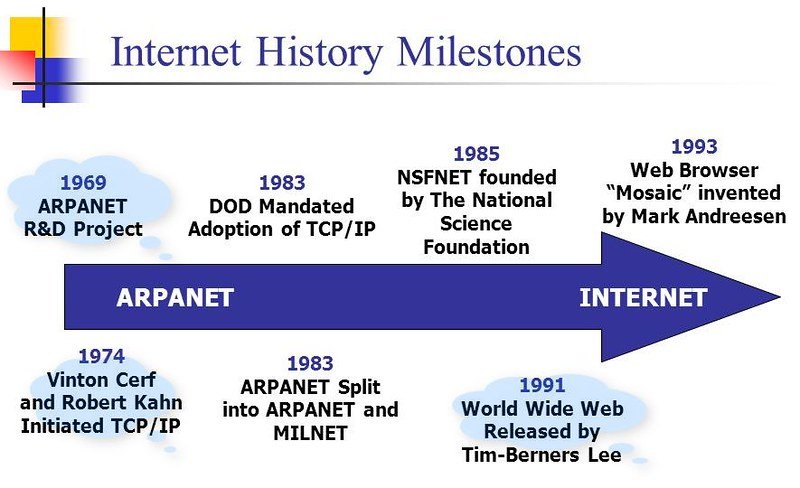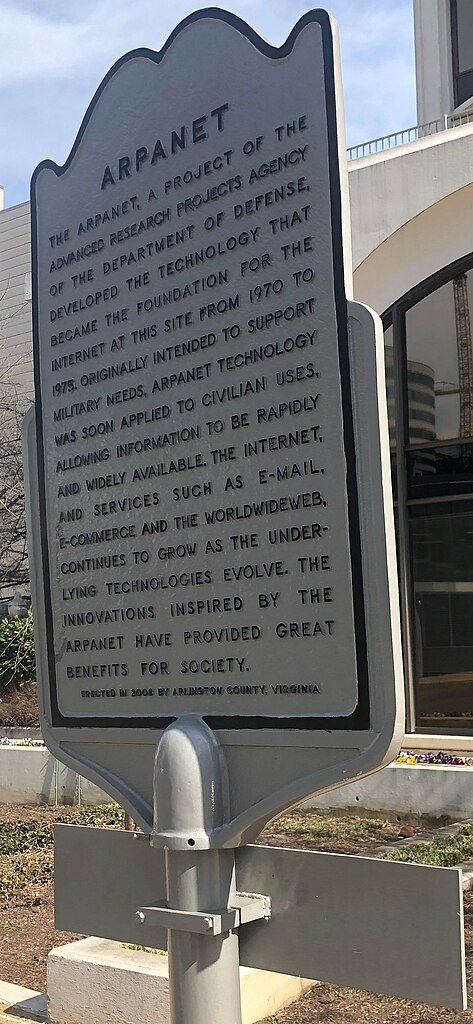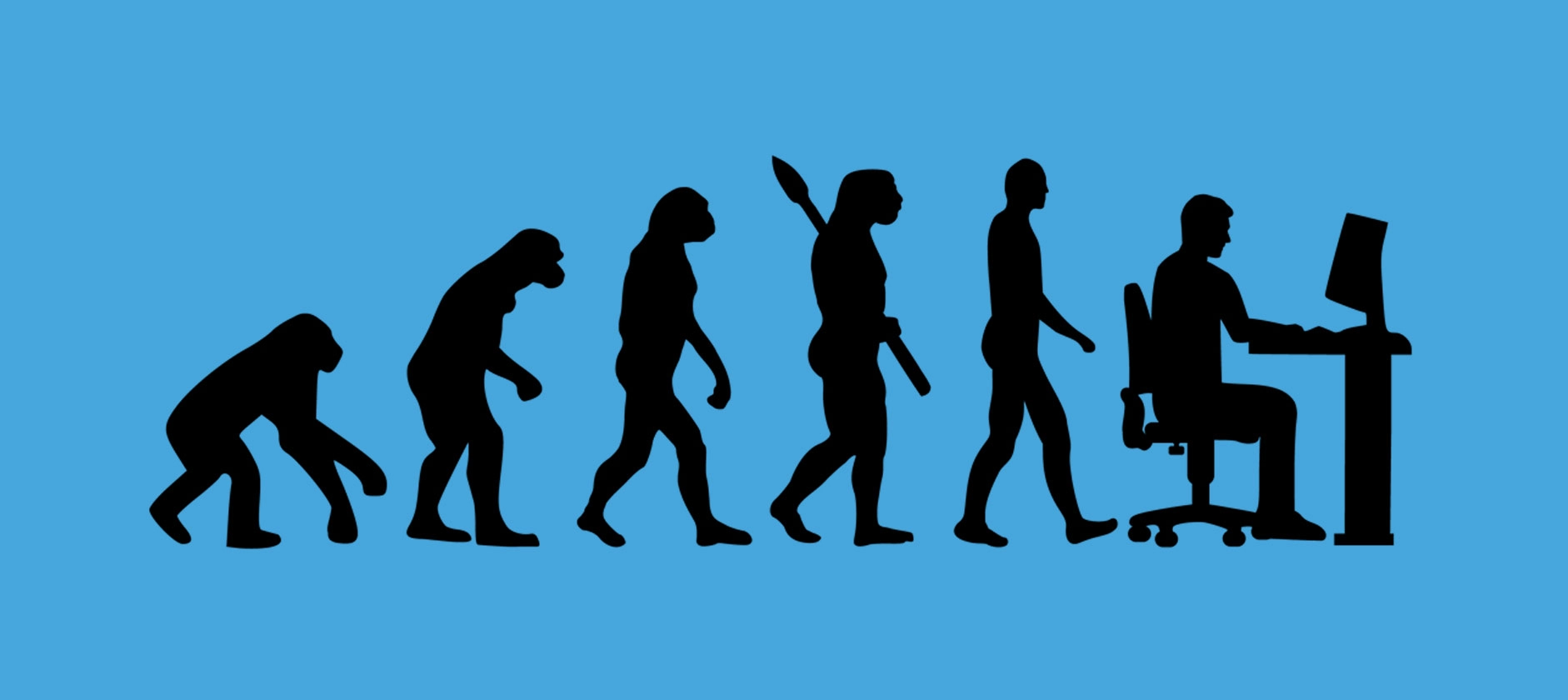The shift from ARPANet to the Internet marks a pivotal moment in technological history. This blog navigates this transformation, exploring ARPANet’s origins and its evolution into the interconnected landscape we now know as the Internet. Launched in the late 1960s by the Advanced Research Projects Agency (ARPA), ARPANet pioneered essential concepts like packet switching, laying the groundwork for global communication protocols. As ARPANet expanded, connecting research institutions that set the stage for the Internet’s ubiquitous influence. Join us as we unravel the story of ARPANet’s metamorphosis into the Internet—a journey that reshaped how we communicate and access information in the modern age.
Table of Contents
But before we delve into this fascinating narrative, let’s address some key questions:
Is ARPANET a LAN or WAN?
ARPANET is a Wide Area Network (WAN), representing a pivotal moment in networking history. As technologies expanded, the necessity to interconnect networks emerged, leading to the development of WANs. ARPANET served as the prototype for WANs, introducing the concept of internetworking and establishing the need for standardised protocols adaptable to diverse hardware configurations.
What was the first internet in the world?

The first internet in the world was ARPANET, developed by the United States Military in the late 1960s. Utilising packet-switching technology, ARPANET-connected computers marked the inception of the interconnected landscape we now know as the Internet. Initially designed for transferring confidential military data, ARPANET laid the groundwork for global communication and information exchange.
Who created ARPANET?
The first internet in the world was ARPANET, developed by the United States Military in the late 1960s. Utilising packet-switching technology, ARPANET-connected computers marked the inception of the interconnected landscape we now know as the internet. Initially designed for transferring confidential military data, ARPANET laid the groundwork for global communication and information exchange.
Is ARPANET the father of the Internet?
Yes, ARPANET is often acknowledged as the precursor and foundational structure that led to the creation of the Internet. Invented by a team of computer scientists working for the Advanced Research Projects Agency (ARPA) in the 1960s, ARPANET introduced key concepts like packet switching, setting the stage for the evolution of interconnected computer networks. This pioneering system, born in 1969, is considered a crucial ancestor and catalyst in the development of the modern Internet.
As we delve deeper into the blog, let’s explore how ARPANet, often hailed as the father of the Internet, played a pivotal role in shaping the digital landscape we navigate today.
The Genesis of ARPANet: Unveiling the Roots of the Digital Revolution
The ARPANet, a pioneering network that sowed the seeds of the digital age, emerged from the fertile grounds of the U.S. Department of Defense’s Advanced Research Projects Agency (ARPA) during the late 1960s. This transformative initiative aimed to create a resilient communication network, connecting diverse research institutions across the United States. Examining the inception, objectives, and early challenges faced by ARPANet sheds light on its pivotal role in shaping the digital landscape we navigate today.
Inception and Vision
Motivation from Cold War Concerns
The genesis of ARPANet was intricately tied to the geopolitical landscape of the Cold War. Concerns about maintaining communication in the event of a nuclear attack prompted the U.S. Department of Defense to explore decentralised and resilient communication networks. ARPA envisioned a system that could withstand disruptions and ensure the continuity of communication among research institutions and military establishments.
Paul Baran’s Distributed Communication
The theoretical groundwork for ARPANet’s design can be traced back to Paul Baran’s work on distributed communication in the early 1960s. Baran’s idea of packet-switching, breaking down data into smaller packets that could independently traverse different routes and then reassemble at the destination, formed the basis for ARPANet’s architecture. This decentralised approach aimed to create a robust and fault-tolerant network, minimising vulnerabilities and ensuring data integrity.
Objectives and Connectivity

Connecting Research Institutions
ARPANet’s primary objective was to interconnect various research institutions and universities, fostering collaboration and resource-sharing among scientists and academics. By establishing a digital infrastructure, ARPANet aimed to overcome the limitations of traditional communication methods, allowing researchers to share information, conduct experiments remotely, and collaborate on a scale previously unimaginable.
Resource Sharing and Remote Computing
One of ARPANet’s key goals was to enable resource sharing, particularly in terms of computing power. Through this network, researchers could access remote computers and utilize computing resources located at different institutions. This not only facilitated the efficient utilisation of resources but also marked a significant departure from the centralised computing model prevalent at that time.
Early Challenges and Evolution
Technological Hurdles
Numerous technological challenges marked the early days of ARPANet. Developing the necessary hardware and software, including routers and protocols, demanded innovative solutions. The team faced issues of packet loss, network congestion, and scalability. Overcoming these challenges required continuous refinement and evolution of the network’s architecture and protocols.
Evolution into the Internet
ARPANet, despite its humble beginnings, laid the foundation for the modern Internet. As the network expanded and matured, protocols such as TCP/IP were developed, standardising communication across different systems. The transition from ARPANET to the Internet marked a crucial phase in the digital revolution, paving the way for the global interconnectedness we experience today.
The Building Blocks of Connectivity
Before we explore the technical architecture of ARPANet, it’s crucial to acknowledge its role as the precursor to the modern internet. Initiated by the U.S. Department of Defense’s ARPA in the late 1960s, ARPANet laid the groundwork for computer networking. Now, let’s uncover the building blocks of its connectivity:
Host-to-Host Communication
- ARPANet pioneered host-to-host communication, developing Interface Message Processors (IMPs) for decentralised data exchange.
- Packet-switching emerged, enhancing resource utilisation and reliability by allowing data to take multiple routes.
Development of Protocols
- TCP/IP protocols, with TCP ensuring reliable data delivery and IP handling addressing, formed ARPANet’s robust foundation.
- Standardized protocols enabled seamless communication, fostering an interconnected network transcending geographical boundaries.
Nationwide Network Connectivity
- ARPANet evolved into a nationwide network, linking research institutions through backbone connections.
- Collaboration among universities and government agencies laid the groundwork for an internet, emphasizing redundancy for network reliability.
Milestones in ARPANet’s Expansion
ARPANET, the Advanced Research Projects Agency Network, played a pivotal role in the development of the internet. Its growth and expansion were marked by several key milestones, each contributing to the evolution of the network and laying the groundwork for the internet as we know it today. Here, we’ll trace the key milestones in ARPANET’s growth, focusing on significant moments in the 1970s:
Initial Four-Node Network (1969)
- ARPANET was officially launched on October 29, 1969, with the establishment of the first four-node network. The initial nodes were located at the University of California, Los Angeles (UCLA), the Stanford Research Institute (SRI), the University of California, Santa Barbara (UCSB), and the University of Utah. This marked the birth of the first-ever operational packet-switched network.
- The development of the Interface Message Processor (IMP), a key component in ARPANET, allowed these four nodes to communicate and exchange data. This decentralised approach to networking was a groundbreaking concept, and it laid the foundation for the future expansion of the Internet.
Implementation of First Host-to-Host Protocols (1970-1972)
- In the early 1970s, the Network Control Program (NCP) was implemented, marking the first host-to-host protocols on ARPANET. This allowed different computers on the network to communicate with each other directly for the first time. The introduction of NCP was a significant step in enabling more complex and diverse interactions over the network.
- This period also saw the establishment of additional nodes and the inclusion of more institutions and research centres, expanding ARPANET’s reach. The growth in the number of nodes facilitated broader collaboration and information exchange among the participating institutions.
Advent of Email (1971)
- One of the most transformative developments in ARPANET was the introduction of email in 1971. Ray Tomlinson, an ARPANET contractor, implemented the first networked email system, allowing users to send messages across different computers on the network. This innovation revolutionised communication and laid the groundwork for the email systems we use today.
- Email not only provided a means for efficient communication but also contributed to the decentralisation of information exchange, further enhancing ARPANET’s utility. The success of email demonstrated the potential of ARPANET beyond simple data transfer, emphasising its role in fostering collaborative communication.
These milestones in ARPANET’s growth during the 1970s not only shaped the trajectory of the network but also paved the way for the development of the internet. The combination of decentralised communication protocols, an expanding network infrastructure, and transformative applications like email laid the groundwork for the interconnected digital landscape we now take for granted.
The Birth of the Internet: ARPANet’s Transformation

Before exploring the pivotal moments that marked ARPANet’s transformation into the Internet, it is crucial to understand the initial vision behind ARPANet. Conceived in the late 1960s by the United States Department of Defense’s Advanced Research Projects Agency (ARPA), ARPANet aimed to create a decentralised communication network resilient to potential nuclear attacks, primarily serving military and scientific research needs.
The inception of ARPANet
- ARPANet, or the Advanced Research Projects Agency Network, was created by the United States Department of Defense’s Advanced Research Projects Agency (ARPA) in the late 1960s. The primary objective was to develop a robust and decentralised communication network that could withstand potential nuclear attacks, ensuring the continuity of communication between military and scientific researchers.
- The first successful ARPANet message was sent on October 29, 1969, between the University of California, Los Angeles (UCLA) and the Stanford Research Institute. This marked the beginning of the interconnected network of computers, laying the foundation for what would later become the Internet.
Emergence of TCP/IP Protocols
- One of the pivotal moments in ARPANet’s transformation into the Internet was the adoption of the Transmission Control Protocol (TCP) and Internet Protocol (IP). Developed by Vinton Cerf and Bob Kahn in the 1970s, TCP/IP became the standard for communication between diverse computer networks. This move was essential for creating a common language that allowed different systems to communicate seamlessly.
- The TCP/IP protocols replaced the earlier Network Control Program (NCP) protocols on ARPANet, streamlining communication and enabling a more scalable and flexible network architecture. This development was crucial in expanding the reach of the network beyond military and research institutions.
Global Expansion and Commercialization
- As ARPANet embraced the TCP/IP protocols, the network grew globally. This expansion led to the establishment of interconnected networks in various countries, creating an international system of networks. The transition from a government-funded and research-focused network to a more publicly accessible and commercially viable infrastructure was a significant milestone.
- The 1980s witnessed the emergence of the first Internet Service Providers (ISPs) and the introduction of domain names. These developments allowed businesses, academic institutions, and individuals to connect to the Internet, marking a shift towards a more inclusive and widespread digital landscape.
Impact on Society and Communication
The evolution from ARPANET to the Internet has had a profound effect on society and communication, ushering in a transformative era that has redefined the way we connect, communicate, and access information. Here are key points that highlight the significant changes:
Emergence of the World Wide Web
- The ARPANet laid the groundwork for the development of the World Wide Web (WWW), which was invented by Sir Tim Berners-Lee in 1989. The WWW revolutionised the way information is organised and accessed on the Internet. Prior to the web, accessing information on ARPANet required users to have a specific knowledge of the network and its protocols. The WWW introduced a user-friendly interface that allowed people to navigate and access information, using hyperlinks and web pages.
- The transition from ARPANET to the World Wide Web democratised access to information. It made information more accessible to the general public, breaking down barriers to entry and empowering individuals to explore a vast array of knowledge. This shift has played a crucial role in promoting education, research, and dissemination of information across various domains.
The democratisation of Information
- ARPANET initially served as a communication tool for the military and scientific communities. However, the evolution of the Internet transformed it into a global platform accessible to people from all walks of life. This democratisation of information has had far-reaching consequences on societies worldwide. Individuals, regardless of their geographical location or socioeconomic status, can now access a wealth of information on diverse topics.
- The democratisation of information has fueled the rise of online education, open-access journals, and collaborative platforms. People can engage in self-directed learning, participate in global discussions, and contribute to knowledge creation. This shift has empowered individuals to become more informed, critical thinkers, and active participants in the digital age.
Revolutionised Communication
- The transition from ARPANET to the Internet has revolutionised communication, making it faster, more efficient, and globally interconnected. Email, for instance, became a ubiquitous form of communication that transcended geographical boundaries. It enabled real-time communication, fostering collaboration and reducing the barriers to interaction between individuals and organisations across the globe.
- Social media platforms, a product of the Internet era, further transformed communication by providing people with unprecedented opportunities to connect, share, and collaborate. These platforms have become powerful tools for activism, social movements, and the exchange of diverse perspectives. The Internet’s impact on communication has redefined relationships, allowing people to maintain connections, share experiences, and engage in virtual communities, transcending physical limitations.
Challenges and Innovations in Internet Development

The development of the Internet from Arpanet to its current form faced significant challenges, including technical, societal, and regulatory hurdles. Here are three key points highlighting challenges and corresponding innovations:
Technical Challenges
- Scalability and Network Congestion: Packet-switching technology and TCP were crucial innovations to address scalability issues.
- Security and Privacy Concerns: Cryptographic protocols like SSL/TLS improved data security and privacy.
- Interoperability and Standardization: Internet protocols (HTTP, HTML, XML) facilitated interoperability and standardised communication.
Societal Challenges
- Digital Divide: Initiatives like affordable technologies and community internet centres addressing the digital divide.
- Content Regulation and Censorship: Innovations in content filtering and regulatory frameworks balanced online freedom with responsible behavior.
- Evolving Digital Literacy: Educational initiatives and online tutorials improved digital literacy.
Regulatory Challenges
- Cross-Border Jurisdiction: International collaborations and treaties, like the Budapest Convention, tackled cross-border jurisdiction challenges.
- Net Neutrality: Advocacy for net neutrality led to regulations preventing discrimination by ISPs.
- Data Protection and Privacy Laws: Regulations like GDPR established guidelines for handling personal data, ensuring user privacy and trust.
In overcoming these challenges, the Internet evolved into a global and interconnected network, showcasing the adaptability, collaboration, and innovation that defined its development.
The Internet Today: A Global Ecosystem
In an era where the Internet serves as the backbone of our digital existence, this exploration unveils the intricate tapestry of the contemporary online realm. From social interactions to technological advancements, the following points shed light on key aspects defining the Internet’s present state and its perpetual evolution.
The Rise of Social Media
Global Connectivity
Social media platforms have become pervasive, connecting people across the globe. Users can effortlessly communicate, share information, and engage in real-time interactions, irrespective of geographical boundaries.
Influence on Society
The rise of social media has significantly impacted societal dynamics. It has become a powerful tool for information dissemination, activism, and shaping public opinion, playing a pivotal role in political movements and social awareness campaigns.
Economic Implications
Social media platforms have also transformed into significant business arenas. Companies leverage these platforms for marketing, customer engagement, and brand building, thereby influencing economic landscapes.
The Advent of Cloud Computing
Infrastructure Transformation
Cloud computing has revolutionised the way data and services are managed. It enables organisations to move away from traditional on-premise infrastructure to scalable and flexible cloud-based solutions, enhancing efficiency and reducing costs.
Global Accessibility
Cloud computing facilitates global access to resources, allowing users to store, retrieve, and process data from anywhere in the world. This has catalysed innovations and collaborations on a global scale.
Digital Transformation
Businesses and individuals alike are undergoing a digital transformation, harnessing the power of cloud services for everything from data storage and processing to application development and deployment.
Continuous Evolution of the Internet
Emergence of IoT
The Internet of Things (IoT) has become a significant driver of the Internet’s evolution, with an increasing number of devices connected to the web. This includes smart homes, wearable devices, and industrial IoT, contributing to a more interconnected and automated world.
Cybersecurity Challenges
As the Internet evolves, so do cybersecurity threats. The continuous development of new technologies brings about new vulnerabilities, requiring ongoing efforts to enhance digital security measures and protect users, businesses, and critical infrastructure.
5G and Beyond
The rollout of 5G networks further accelerates the Internet’s capabilities, providing faster and more reliable connectivity. This opens the door to innovations such as augmented reality, autonomous vehicles, and enhanced mobile experiences.
The evolution from ARPANET to the Internet is a saga of innovation, determination, and the relentless pursuit of connectivity. This blog has endeavored to illuminate the historical milestones, technical breakthroughs, and societal impacts that characterise this transformative journey. As we navigate the vast expanse of the Internet today, it’s crucial to appreciate the roots embedded in ARPANet. This humble yet revolutionary network laid the groundwork for the interconnected world we inhabit.














